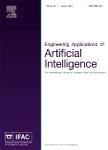版权所有:内蒙古大学图书馆 技术提供:维普资讯• 智图
内蒙古自治区呼和浩特市赛罕区大学西街235号 邮编: 010021

作者机构:Southeast Univ Sch Elect Engn 2 Sipailou Nanjing 210096 Peoples R China State Grid NARI 19 Chengxin Ave Nanjing 211100 Peoples R China
出 版 物:《ENGINEERING APPLICATIONS OF ARTIFICIAL INTELLIGENCE》 (Eng Appl Artif Intell)
年 卷 期:2025年第144卷
核心收录:
学科分类:0808[工学-电气工程] 08[工学] 0811[工学-控制科学与工程] 0812[工学-计算机科学与技术(可授工学、理学学位)]
主 题:Security-constrained unit commitment Deep reinforcement learning Decision trees Explainable artificial intelligence
摘 要:The large-scale security-constrained unit commitment (SCUC) is pivotal for ensuring the secure and economical operation of modern power systems. Formulated as a mixed-integer nonlinear programming problem, mathematical model-based methods struggle to balance computation efficiency and solution accuracy. While artificial intelligence methods offer promising potential, they face several obstacles, including limited interpretability and generalizability constraints. In light of these challenges, this paper proposes an interpretation method for deep reinforcement learning models that is used to reduce integer variables for large-scale SCUC problem. This method employs a Gaussian Mixture Model to cluster the decision outcomes of the agents and utilizes an improved decision tree to interpret the clustering results. We analyze the physical implications behind the phenomenon of unit output distributions exhibiting multiple independent Gaussian distributions. Then, these interpretations are applied to identify active integer variables, thereby simplifying the complexity of the SCUC problem and enhancing solution efficiency. Furthermore, an improved Markov decision process model with domain knowledge pertinent of power systems is constructed to enhance the interpretability and reliability of the agents. A distinctive feature of this model is the incorporation of a bidirectional mapping of unsafe and safe actions. The case studies on the SG-126 system demonstrate that the proposed method achieves a significant increase in solution speed without loss of accuracy. The identified active integer variables are proven to be accurate and effective, contributing to improve computation efficiency of unit commitment. The proposed method also provides a novel explainable artificial intelligence-assisted method for complex decision-making problems in other fields.